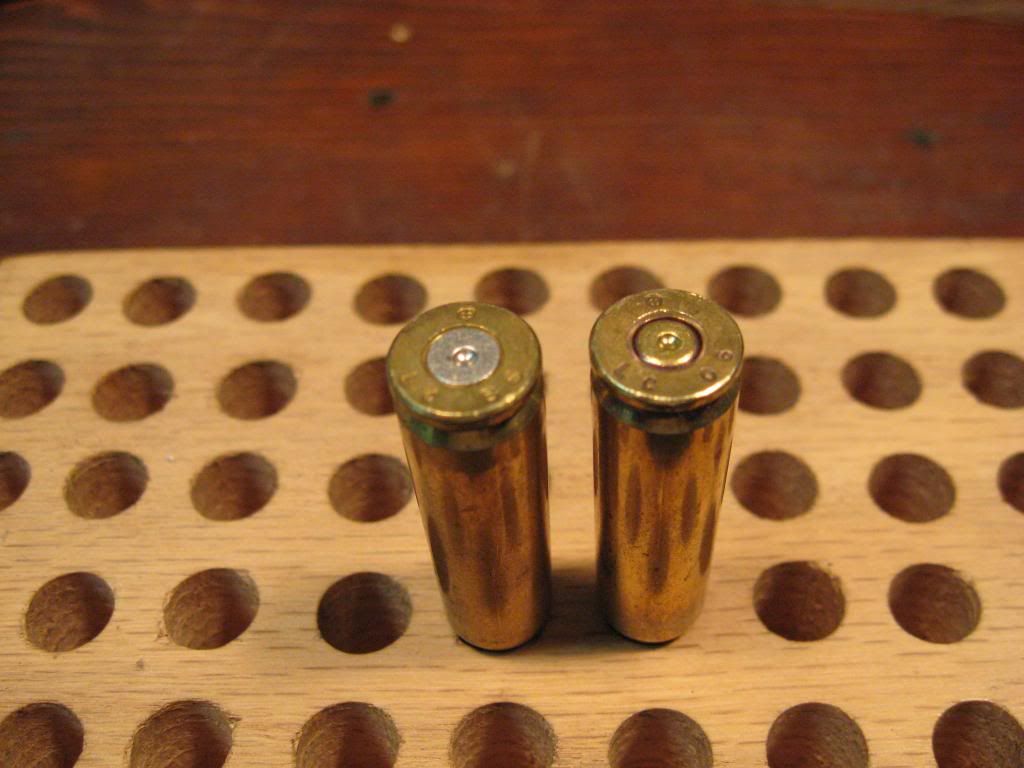First post though I've been lurking for awhile. Searched around and couldn't find anything similar.
Been reloading for thirty years and never seen anything this drastic before.

Both cases are Lake City loaded with 42.0 grains of Imr 8208 XBR behind a Hornady 150 SST.
Everything about the two is the same except for the primer. The one on the left is once fired case with a Winchester large rifle primer and the one on the right is a military primer that came loaded in the brass, that had the bullets pulled.
There was no other indication of high pressure. No ejector marks and bolt lift was basicly the same on both.
Both were loaded at the same time from the same canister of powder and bullets seated to the same length. Rifle is a Remington 700.
Is the difference because the winchester primer is that much hotter causing higher pressure or is the winchester primer that much softer or thinner?
Thanks
Been reloading for thirty years and never seen anything this drastic before.

Both cases are Lake City loaded with 42.0 grains of Imr 8208 XBR behind a Hornady 150 SST.
Everything about the two is the same except for the primer. The one on the left is once fired case with a Winchester large rifle primer and the one on the right is a military primer that came loaded in the brass, that had the bullets pulled.
There was no other indication of high pressure. No ejector marks and bolt lift was basicly the same on both.
Both were loaded at the same time from the same canister of powder and bullets seated to the same length. Rifle is a Remington 700.
Is the difference because the winchester primer is that much hotter causing higher pressure or is the winchester primer that much softer or thinner?
Thanks

